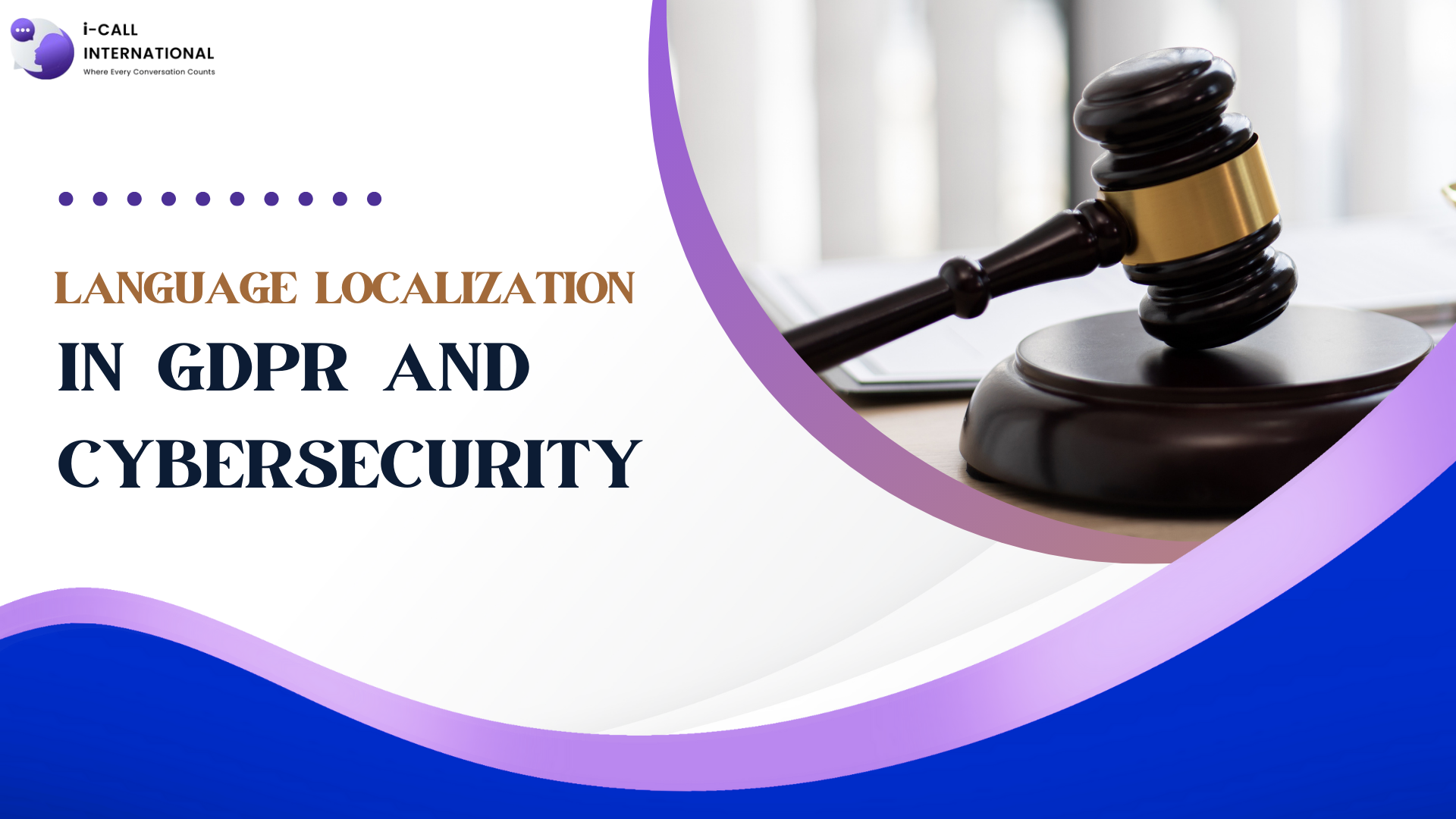Businesses are expanding their reach across borders, tailoring their products and services to diverse cultures and languages—a process known as localization. While localization enhances user experience and broadens market access, it also brings forth significant legal considerations, especially concerning data protection under the General Data Protection Regulation (GDPR) and cybersecurity. Let’s delve into the legal implications of language localization within these frameworks and explore how businesses can navigate this complex landscape.
Understanding Localization and Its Legal Significance
Localization goes beyond mere translation; it involves adapting content to align with a target market’s cultural, linguistic, and legal nuances. This results in products, services, and communications that resonate with local audiences. However, proper localization can lead to misunderstandings, misrepresentations, and, more critically, non-compliance with local laws, particularly in data protection and cybersecurity.
GDPR: Brief Overview
The GDPR, implemented by the European Union in 2018, is a comprehensive regulation that governs the processing of personal data of individuals within the EU. It emphasizes transparency, security, and the rights of data subjects, imposing strict guidelines on how personal data should be handled. Non-compliance results in substantial fines, reaching up to €20 million or 4% of the company’s global annual turnover, whichever is higher.
Legal Implications of Localization Under GDPR
- Consent and Transparency
When localizing pricy policies and terms of service, it’s crucial to ensure that translations maintain the clarity and intent of the original text. Misinterpretations to poor translation can lead to individuals not fully understanding how their data will be used, resulting in invalid consent, a direct violation of GDPR. According to Optiling, while there’s no legal obligation to translate GDPR content, fulfilling information and transparency obligations necessitates translating certain types of information on a website to avoid misunderstandings that could lead to legal action. (secureworld.io) - Data Subject Rights
GDPR grants individuals specific rights, including the right to access, rectify, and erase their personal data. Local content must accurately inform users of these rights in their native language. Failure to do so can prevent individuals from exercising their rights, leading to non-compliance issues. - Data Transfer and Localization
Translating and storing data across borders can trigger GDPR’s data transfer provisions. Organizations must ensure that personal data transferred outside the EU is protected by appropriate safeguards. The GDPR does not have specific data localization requirements; however, it is clear on the conditions under which EU citizens’ data can be transferred to non-EU countries or international organizations. For EU citizens’ data to leave the Union, the receiving country must either have the European Commission’s adequacy decision, appropriate protection safeguards in place, or Binding Corporate Rules (BCR). (informationpolicycentre.com)
Cybersecurity Considerations in Localization
- Increased Attack Surface Expanding
Digital presence through localization can inadvertently increase the attack surface for cyber threats. Each localized version of a website or application may present unique vulnerabilities, making comprehensive security assessments crucial.
- Datcalization Laws
Some countries enforce data localization laws, requiring data about their citizens to be stored within national borders. While intended to enhance data security and sovereignty, the laws can complicate cybersecurity efforts. For instance, data localization can limit the effectiveness of cybersecurity-related tools and services, such as threat detection systems, which rely on cross-border data flows that include personal data. (informationpolicycentre.com) - Compliance with Local Cybersecurity Regulations
Different jurisdictions have varying cybersecurity requirements. Localized content must comply with local laws, which may include specific mandates for data protection measures, breach notifications, and user rights. For example, China’s Cybersecurity Law imposes stringent data localization requirements and mandates that network operators store select data within China and undergo security assessments before transferring such data abroad. (en.wikipedia.org)
Best Practices for Legal Compliance in Localization: Engage Professional Translators with Legal Expertise
Utilize professional translators who are not only fluent in the target language but also knowledgeable about local laws and regulations. This ensures that legal documents and privacy policies are accurately translated, maintaining their legal integrity.
- Conduct Data Protection Impact Assessments (DPIAs)
Before implementing localization strategies, perform DPIAs to identify and mitigate potential data protection risks. This proactive approach aligns with requirements and enhances overall compliance.
2. Implement Robust Cybersecurity Measures
Ensure that all licensed platforms adhere to stringent cybersecurity protocols. Regularly update security measures to address emerging threats and conduct thorough testing to identify vulnerabilities in each localized version.
3. Stay Informed on Local Regulations
Continuously monitor and stay informed about data protection and cybersecurity laws in each target market. This vigilance allows organizations to adapt quickly to legal changes and maintain compliance.
Conclusion
While language localization offers significant benefits in reaching diverse markets, it also presents complex challenges, particularly concerning GDPR compliance and cybersecurity. Organizations must approach localization with a comprehensive strategy that addresses legal implications, ensuring that all content is not only culturally and linguistically appropriate but also legally compliant. By implementing best practices and staying informed about local regulations, businesses can navigate the intricate landscape of localization, data protection, and cybersecurity effectively.

